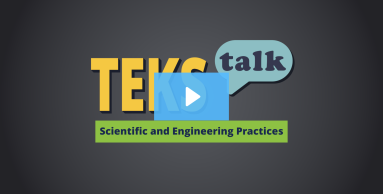
Knowledge and Skills Statement
The further explanation is designed to be a resource for educators that helps them better understand the topic their students are learning. Further explanations may be written at a more complex level than would be expected for students at the grade level.
Models:
Both scientists and engineers use a variety of models. Physical models show how things look or work in the real world. Conceptual models represent relationships and describe how things work or fit together. Mathematical models use mathematical equations, theories, formulas, and proofs. Simulations allow for the control of variables and mimic real-world processes. Examples of models include sketches, diagrams, mathematical relationships, simulations, and physical models, and are used to make predictions about the behavior of a system.
Processes:
Natural processes such as life cycles, weather, or the rock cycle, can be represented with conceptual, physical, mathematical, or simulated models. In engineering, the solution to a design challenge could be a new or improved process shown with a model or diagram.
Prototype:
Prototypes are a subset of models that serve a specific purpose. Models are usually created after data is collected and are used to explain systems or processes. Models can be used to communicate findings to the target audience. Prototypes are usually created as an early step in determining why a system is not working or to try to improve a design. They are not typically shared with the broader public once the problem has been solved.
Research
Gerlach, Jonathan W. “Elementary Design Challenges.” Science and Children 47, no 7 (March 2010): 43–47.
http://www.jstor.org/stable/43175605.
Summary: 5th-grade students complete an activity to explore force and motion by building airplanes out of household items. The teacher in this article uses the design process, allowing students multiple chances to revise their project when things aren’t working. The class starts by partaking in a real-world engagement activity, such as watching videos of real airplanes and how they fly. The students then discuss the different forces that act on an airplane. The class is split into groups of two and given limited supplies to build their airplanes, seeing which group's plane can fly the farthest. Teachers should check for misconceptions throughout the activity and remind them to think of real airplanes rather than the paper airplanes they may be used to making. After students completed and tested their planes, they hypothesized why their planes were unsuccessful and made revisions.
Research
Wingert, Kerri, Marian Wagner, Andre Shouse, Steve Spodaryk & Jeanne Chowning. "Practice 8: What Is Meant by Engaging Youth in Scientific Modeling?” STEM Teaching Tools, Institute for Science + Math Education, January 2015. https://stemteachingtools.org/brief/8
Summary: Scientists use models regularly to represent their findings. Allowing students to study and develop models benefits their understanding of how science works. This article also provides teacher reflection questions.
